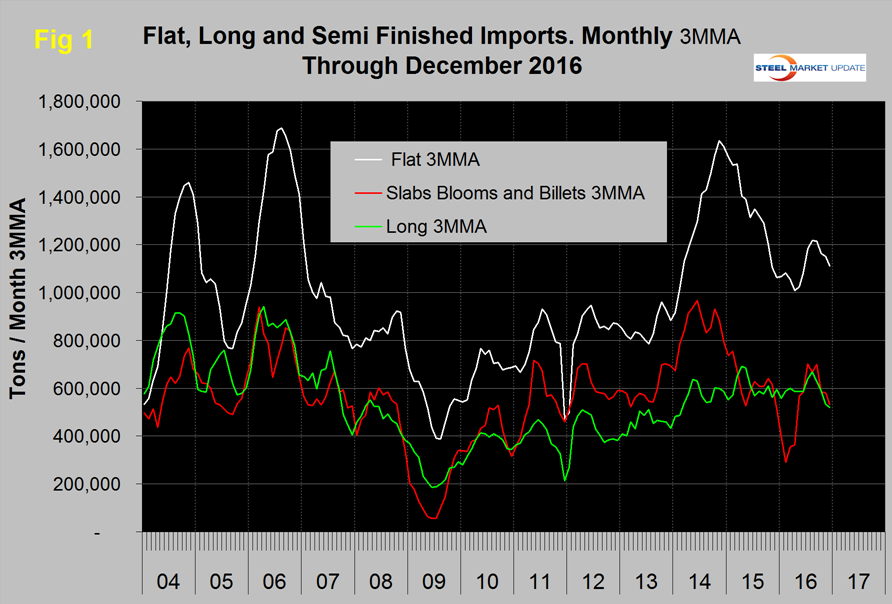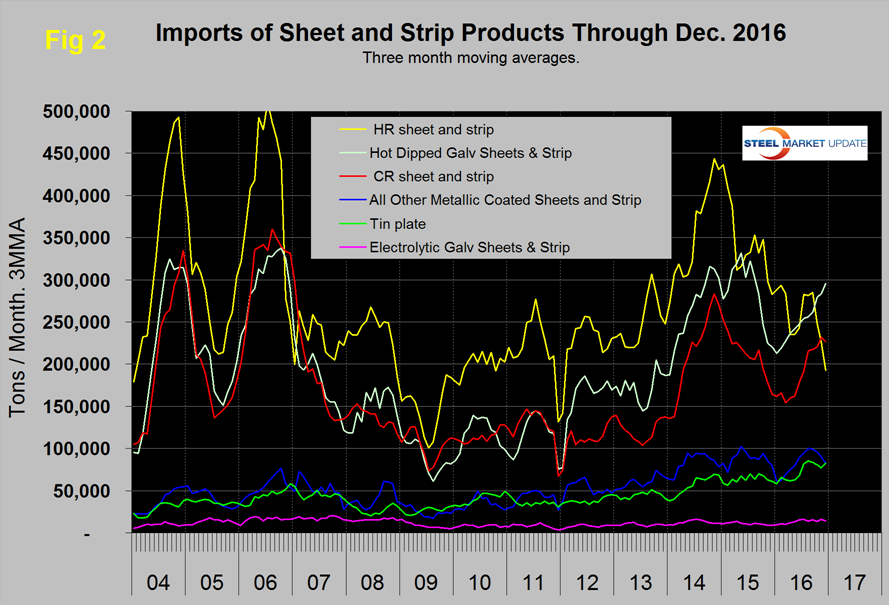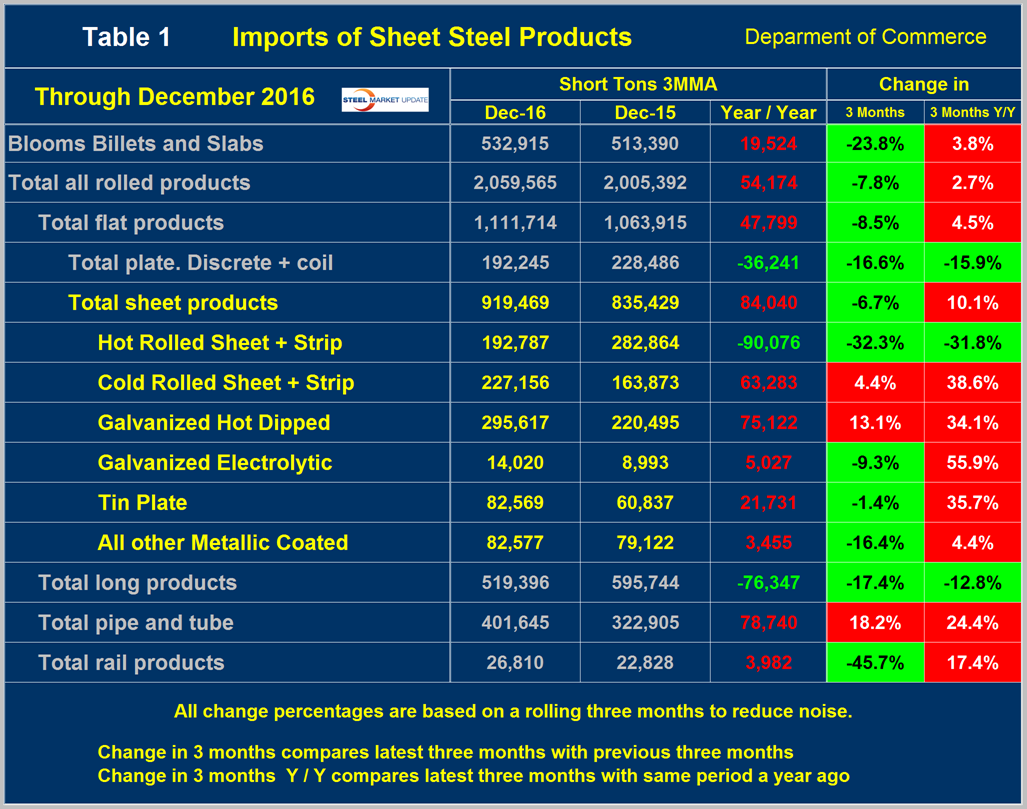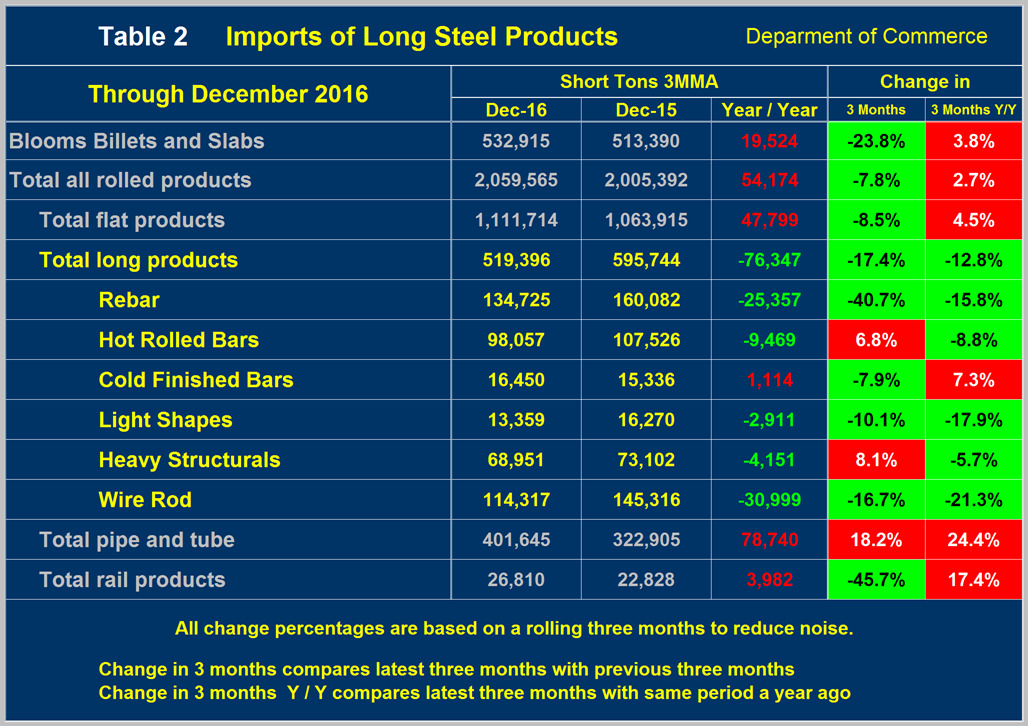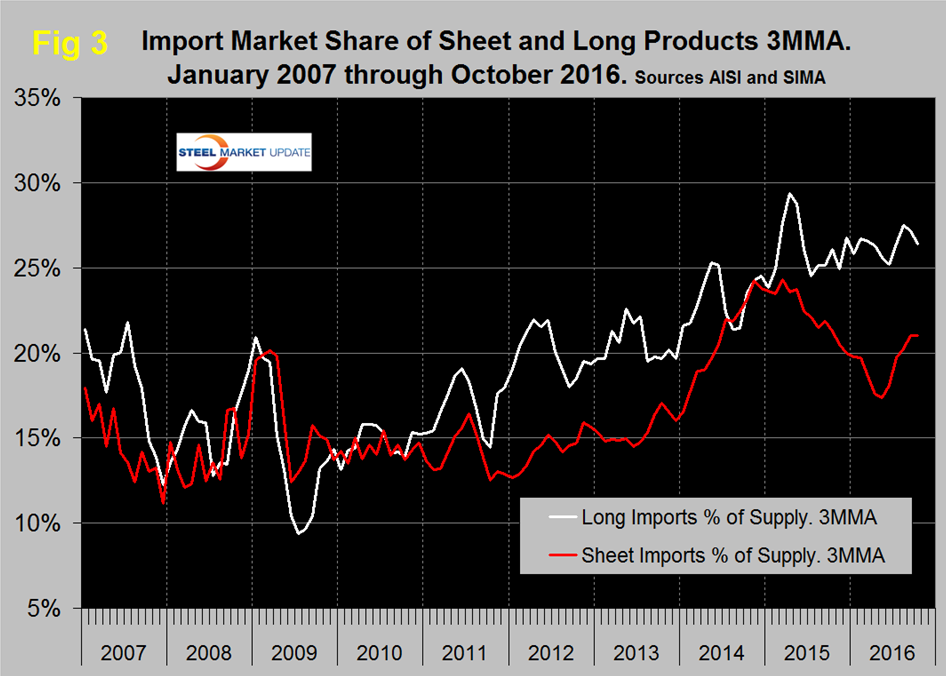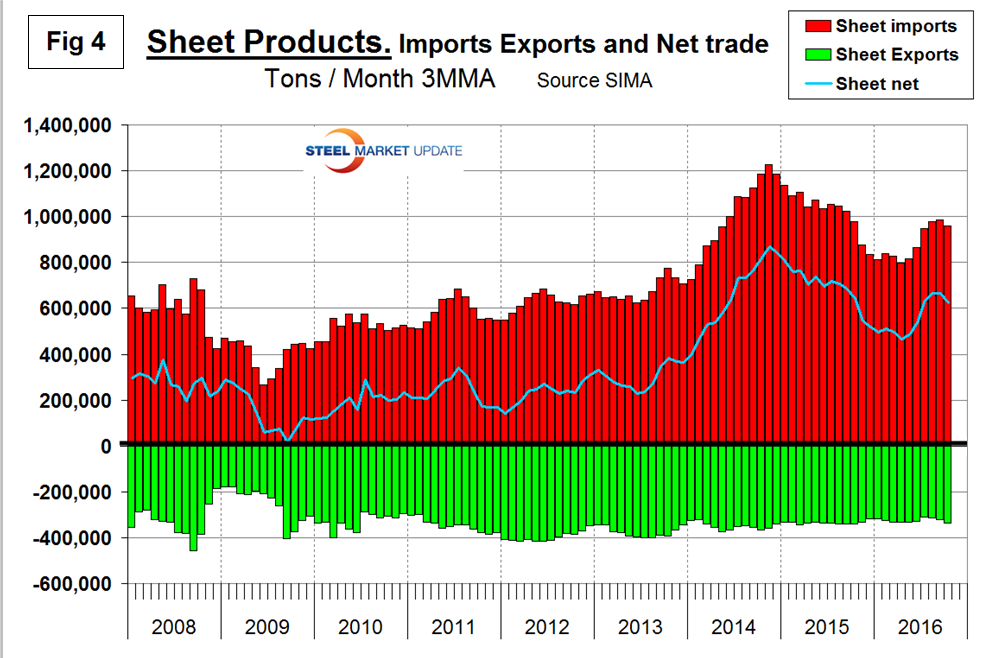Steel Products Prices North America
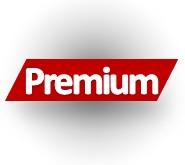
Flat, Long, and Semi-Finished Imports through December 2016
Written by Peter Wright
January 5, 2017
Licensed data for December was reported by the Steel Import Monitoring System of the US Commerce Department on January 3rd. An explanation of the methodology that use at SMU to analyze the trade data is given at the end of this piece. All volumes in this analysis are reported in short tons.
![]() In December, on a three month moving average (3MMA) basis, the plunge in HRC imports continued for the third consecutive month and long product imports broke through the bottom of the range that has existed for 34 months. The volume of HDG imports increased every month in 2016.
In December, on a three month moving average (3MMA) basis, the plunge in HRC imports continued for the third consecutive month and long product imports broke through the bottom of the range that has existed for 34 months. The volume of HDG imports increased every month in 2016.
Total rolled product licensed imports in the single month of December were 1,974,000 tons with a 3MMA of 2,056,000 tons. We prefer not to dwell on single months results because of the extreme variability that can occur in individual products. In the comments below we use only three month moving averages because normally this presents a more representative picture.
Figure 1 shows the 3MMA through December licensed tons of semi-finished, flat and long products since January 2004.
Imports of semi-finished in December were 501,000 tons with a three month moving average of 533,000 tons. February’s import volume of semis was an outlier, since then the volume has recovered to a level typical of 2015. “Flat” includes all hot and cold rolled sheet and strip plus all coated sheet products plus both discrete and coiled plate. The 3MMA of flat rolled imports peaked at 1,634,000 tons in December 2014, fell to 1,009,000 tons in April this year, climbed back to 1,218,000 tons in August and by December had fallen back to 1,112,000 tons. Long product imports have been range bound between 539,000 tons and 772,000 tons from March 2014 through November 2016. In the last four months there has been a steady decline and the 3MMA broke through the bottom of the 34 month range to 519,000 tons in December.
Figure 2 shows the 3MMA trend of sheet and strip products since January 2004.
The total of these products was down by 6.7 percent in three months through December compared to three months through September. HRC was down sharply in October, November and December. CRC and HDG were both higher than HRC in December on a 3MMA basis which was very unusual. Other metallic coated, mainly Galvalume and tin plate have been trending up this year and tin plate imports are now higher than at any time since January 2004. Electro-galvanized is up significantly on a percentage basis from this time last year but the volumes are small.
Table 1 provides an analysis of major product groups and of sheet products in detail. It compares the average monthly tonnage in the three months through December 2016 with both three months through September (3M/3M) and three months through December 2015 (Y/Y).
On a Y/Y basis the 3MMA of the total of all rolled products was up by 54,174 tons or 2.7 percent, as total sheet products were up by 10.1 percent. Tubulars were up by 24.4 percent. Semi-finished slabs, blooms and billets were up by 3.8 percent and long products were down by 12.8 percent. There were big differences between the individual sheet products on a Y/Y comparison. HRC was down by 31.8 percent and CRC and HDG were up by 38.6 percent and 34.1 percent respectively. On a 3M/3M basis the total volume of hot worked products was down by 7.8 percent also with a big difference between products. HRC was down by 32.3 percent as CRC and HDG were up by 4.4 percent and 13.1 percent, respectively. Table 2 shows the same analysis for long products.
The total tonnage of long products was down by 76,347 tons per month Y/Y. Rebar was down by 15.8 percent and all products, except cold finished bars, were down Y/Y. On a 3M/3M basis the total volume of long products decreased by 17.4 percent.
Figure 3 shows the import market share of sheet and long products through October which is the latest data available for total steel supply.
The import market share of sheet products peaked at 24.3 percent in March 2015 and was less than 20 percent for each month of 2016 until August when it rose to 20.3 percent on a 3MMA basis. Import share in both September and October was 21 percent. Long product import market share peaked at 29.4 in April 2015 but has only had two months since then below 25 percent. Import share of longs in October was 26.4 percent.
Net imports equals imports minus exports and our analysis is based on the final volumes through October. We regard this as an important look at the overall trade picture and its effect on demand at the mill level. Figure 4 shows net sheet product imports on a 3MMA basis at 622,673 tons in October which was down from 663,825 in September as imports declined slightly and exports increased by a similar amount.
The total net sheet imports were down by 1,331,000 tons YTD through October. Compared to imports, exports have been relatively consistent for almost eight years. Net sheet steel imports are still high by historical standards. If as expected the Fed raises interest rates this month (December), the US $ will appreciate against the currencies of the steel trading nations and this in turn will tend to drive imports higher and exports lower in 2017.
Explanation: SMU publishes several import reports ranging from this very early look using licensed data to the very detailed analysis of final volumes by product, by district of entry and by source nation which is available on the premium member section of our web site. The early look, the latest of which you are reading now, has been based on three month moving averages (3MMA) using the latest licensed data, either the preliminary or final data for the previous month and final data for earlier months. We recognize that the license data is subject to revisions but believe that by combining it with earlier months in this way gives a reasonably accurate assessment of volume trends by product as early as possible. We are more interested in direction than we are in absolute volumes at this stage. The main issue with the license data is that the month in which the tonnage arrives is not always the same month in which the license was recorded. In 2014 as a whole, our data showed that the reported licensed tonnage of all carbon and low alloy products was 2.3 percent less than actually receipts, close enough we believe to confidently include licensed data in this current update. The discrepancy declined continuously during the course of the twelve month evaluation as a longer time period was considered.

Peter Wright
Read more from Peter WrightLatest in Steel Products Prices North America

Nucor slows HRC price climb with $5/ton increase
After eight weeks of double-digit price increases on hot-rolled (HR) coil, Nucor slowed the price rise this week with an increase of $5 per short ton.

Domestic CRC prices surge ahead of imports
The price spread between stateside-produced CR and imports reached its widest margin in over a year.

Evraz raises plate prices $160/ton
Evraz North America (NA) has followed Nucor and SSAB with a plate price increase of its own: up $160 per short ton (st). The increase was effective immediately for all new orders of carbon, high-strength low-alloy, and normalized and quenched-and-tempered plate products, as well as for hot-rolled coil, the steelmaker said in a letter to […]

Nucor lifts HR coil to $820/ton
Nucor has increased its consumer spot price (CSP) for hot-rolled (HR) coil for a fourth consecutive week.

Nucor pushes HR spot price to $790/ton
Nucor increased its consumer spot price (CSP) for hot-rolled (HR) coil to $790 per short ton (st) on Monday, Feb. 10 – a $15/st bump vs. last week. The Charlotte, N.C.-based company has raised its weekly CSP by $40/st over the past three weeks after maintaining tags at $750/st since Nov. 12, according to SMU’s […]

